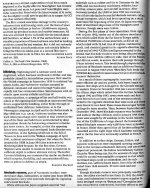CanonRFinder
Well-known


 This is not exactly a rangefinder camera but being an early Seiki Kogaku Canon camera, be it a specialist model, I think it would be of interest to others in this forum.
This is not exactly a rangefinder camera but being an early Seiki Kogaku Canon camera, be it a specialist model, I think it would be of interest to others in this forum.Back in late November 06 I was lucky enough to stumble across an auction item in Germany via Auctionteambreker in Koln. I knew about the lens from my research and one in particular is pictured in Ueyama Hayato's all Japanese book on early SK Canon lore. Even to Hayato the lens apparently was a MYSTICAL lens. He mentioned in a letter to me that when he was talking to early ex-employees from SK Canon, the lens came from a Fingerprint Camera. Whether one of these cameras had been seen in Japan is still unknown as I am still waiting for a reply from Hayato but I gather from his earlier reply to my request about the lens he had not seen such a camera.
Anyway I won the auction and still cannot believe I was the only bidder on the item. I think this was due to the obscure description and subject heading of the item in the auction. It came with an equally interesting camera which I will expand on sometime later but it wasn't a Canon item.
Once I received the Seiki Fingerprint Camera # 819 it turns out it took medium format photographs on 120 film.......YEP CANON did make a 6x6 format camera using 120 film and this is from the era between 1939 and 1941. Why can I date it to that period is because the small 75mm f/4.5 lens is marked Seiki Kogaku and does NOT have the "Serenar" name on the lens anywhere. The Serenar name was trademarked in December 1941.
I intend to write an article on the camera for a local OZ camera mag (who pay $$ for articles more than most other mags do) and a UK based journal but this here is the first real description of the camera.
The camera is made up of four separate parts with the two front sections hinged at the base. The front section has a spring released front door. Lift a primitive click stop arm and the front section drops away exposing four small 3.5v screw-in bulbs located on the four corners of the front part of the second section of the outfit. The inside of the front section and around the bulbs is painted silver to reflect the light back into the camera. The second section is opened by pressing a small button underneath the handle. Removing a cover on the back of the second section exposes two chambers which hold six D size batteries, three in each chamber. Once the second section has dropped away it exposes the front of the third section which holds the lens and simple shutter mechanism along with the electrical contacts. On the side of the third section there is a mains socket, so along with the batteries, the unit is totally portable. The mode of power is set by a dial on the side of the unit which can be set for either mains or battery use. The shutter is operated by a lever sticking out on the top to the right of the handle and when moved to the open position a small pan-handle flap drops down exposing the lens and simultaneously it activates a simple electrical contact located in the roof of the chamber. Simple but effective.
The 120 film back is slotted into the back of the third section and when removed exposes the electrical transformer located in the roof of the third section, just above the back of the lens. The film is loaded by removing the back cover and placing the unexposed film roll into the bottom chamber which is then wound on from bottom to top. There is an empty "SAKURA" film spool in place but unsure if they are still making film. Exposure is ready by removing the substantial dark slide. Timing and aperture setting must have been set to a predetermined f/stop and distance measurement
There is another Fingerprint camera featured in Sugiyama's Rosetta Stone Japanese book on page 312 but has no makers name. Another is pictured via this link.
http://www.geocities.com/shioshya/search.html
I am unsure who made the lens 75mm f/4.5 lens whether it be Nikon or Canon or someone else but Canon did in Feb 1939 installed two lens grinding generators, five lens polishers and a checking instruments into the Meguro factory. At the same time Nippon Kogaku transferred Mr Furukawa, a lens designer to Seiki Kogaku. So the lens could well have been made by SK Canon and fitted to these specialist cameras which were used by the Japanese Army in China and Japan. One thing that might point the lens being made by SK is the use of the 'mm' measurement and maybe this was to differentiate from the 'cm' measurement favoured and used by Nikon at the time.
As far as I know Canon only made one other 6x6 camera and that was used on 1968 X-Ray camera.
How a RARE and early camera ended up in an auction in Germany beats me unless it had been imported into Germany sometime in 1941 to be used there BUT I am sure there were similar cameras made in Germany at that time.
Enjoy Peter K.









